Solar System: Be In The Know This Week
Solar System: Be in the Know This Week
Our solar system is huge, let us break it down for you. Here are a few things to know this week:
1. Say Farewell to a Comet Rider

After a successful and eventful adventure landing on a comet, no more signals will be received from the Rosetta mission's comet lander, Philae.
Send your goodbyes to Philae
2. Target Shooting

Using new software our very own Mars rover Curiosity can even choose its own rock targets for its laser spectrometer.
Find out how Curiosity selects its own targets
3. Flares for the Dramatic

Our sun recently emitted three mid-size solar flares, and the Solar Dynamics Observatory captured it all.
Watch the Show!
4. Bring the Heat

Jupiter's Great Red Spot may be the mysterious heat source behind the planet’s surprisingly high upper atmospheric temperatures. When Juno begins its science orbits, the Great Red Spot will be among its top targets.
Learn More
5. Cut and Dried

The gullies on today’s Red Planet were not cut by flowing liquid water, as previously thought, but rather by processes such as the freeze and thaw of carbon dioxide frost. New findings using data from our Mars Reconnaissance Orbiter provide a new picture of the cause,
Learn More
Discover the full list of 10 things to know about our solar system this week HERE.
Make sure to follow us on Tumblr for your regular dose of space: http://nasa.tumblr.com
More Posts from Nasa and Others
I’m sure you’re trained so that nothing in space is really a surprise, but: was there anything about spacewalking that surprised you when you did it for the first time?
Roman’s Heat-Vision Eyes Are Complete!

Our Nancy Grace Roman Space Telescope team recently flight-certified all 24 of the detectors the mission needs. When Roman launches in the mid-2020s, the detectors will convert starlight into electrical signals, which will then be decoded into 300-megapixel images of huge patches of the sky. These images will help astronomers explore all kinds of things, from rogue planets and black holes to dark matter and dark energy.

Eighteen of the detectors will be used in Roman’s camera, while another six will be reserved as backups. Each detector has 16 million tiny pixels, so Roman’s images will be super sharp, like Hubble’s.

The image above shows one of Roman’s detectors compared to an entire cell phone camera, which looks tiny by comparison. The best modern cell phone cameras can provide around 12-megapixel images. Since Roman will have 18 detectors that have 16 million pixels each, the mission will capture 300-megapixel panoramas of space.
The combination of such crisp resolution and Roman’s huge view has never been possible on a space-based telescope before and will make the Nancy Grace Roman Space Telescope a powerful tool in the future.
Learn more about the Roman Space Telescope!
Make sure to follow us on Tumblr for your regular dose of space!
@ringochan94: What advice would you give the new generation of teens who want to get into your field of work?
Worlds That Will Make You Believe Star Wars is Real
The fantastical planets in Star Wars preceded our discovery of real planets outside our solar system…but fiction isn’t too far from the facts. When we send our spacecraft into the solar system and point our telescopes beyond, we often see things that seem taken right out of the Star Wars universe.
Is there a more perfect time than May the 4th to compare real worlds to the ones depicted in Star Wars?
Probably not...so here are a few:
Mimas

Saturn’s moon, Mimas, has become known as the "Death Star" moon because of how its 80-mile wide Herschel crater creates a resemblance to the Imperial battle station, especially when seen in this view from our Cassini spacecraft.
Kepler-452b

The most recently revealed exoplanet dubbed as Earth’s bigger, older cousin, Kepler-452b, might make a good stand-in for Coruscant — the high tech world seen in several Star Wars films whose surface is encased in a single, globe-spanning city. Kepler-452b belongs to a star system 1.5 billion years older than Earth’s! That would give any technologically adept species more than a billion-year jump ahead of us.
CoRoT-7b

At 3,600 degrees Fahrenheit, CoRoT-7B is a HOT planet. Discovered in 2010 with France’s CoRoT satellite, it’s some 480 light-years away, and has a diameter 70% larger than Earth’s, with nearly five times the mass. Possibly the boiled-down remnant of a Saturn-sized planet, its orbit is so tight that its star looms much larger in its sky than our sun appears to us, keeping its sun-facing surface molten! This scorching planet orbiting close to its star could be a good analog for planet Mustafar from Star Wars.
Kepler-16b

Luke Skywalker’s home planet, Tatooine, is said to possess a harsh, desert environment, swept by sandstorms as it roasts under the glare of twin suns. Real exoplanets in the thrall of two or more suns are even harsher! Kepler-16b was the Kepler telescope’s first discovery of a planet in a “circumbinary” orbit (a.k.a, circling both stars, as opposed to just one, in a double star system). This planet, however, is likely cold, about the size of Saturn, and gaseous, though partly composed of rock.
OGLE-2005-BLG-390

Fictional Hoth is a frozen tundra that briefly serves as a base for the hidden Rebel Alliance. It’s also the nickname of real exoplanet OGLE-2005-BLG-390, a cold super-Earth whose surface temperature clocks in at minus 364 degrees Fahrenheit.
Kepler-22b

Kepler-22b, analog to the Star Wars planet Kamino…which was the birthplace of the army of clone soldiers, is a super-Earth that could be covered in a super ocean. The jury is still out on Kepler-22b’s true nature; at 2.4 times Earth’s radius, it might even be gaseous. But if the ocean world idea turns out to be right, we can envision a physically plausible Kamino-like planet.
Gas Giants

Gas giants of all stripes populate the real exoplanet universe; in Star Wars, a gas giant called Bespin is home to a “Cloud City” actively involved in atmospheric mining. Mining the atmospheres of giant gas planets is a staple of science fiction. We too have examined the question, and found that gases such as helium-3 and hydrogen could theoretically be extracted from the atmospheres of Uranus and Neptune.
Exomoons

Endor, the forested realm of the Ewoks, orbits a gas giant. Exomoon detection is still in its infancy for scientists on Earth. However, a possible exomoon (a moon circling a distant planet) was observed in 2014 via microlensing. It will remain unconfirmed, however, since each microlensing event can be seen only once.
May the 4th be with you!
Discover more about exoplanets here: https://exoplanets.jpl.nasa.gov/
Make sure to follow us on Tumblr for your regular dose of space: http://nasa.tumblr.com
Tomorrow’s Technology on the Space Station Today
Tablets, smart appliances, and other technologies that are an indispensable part of daily life are no longer state-of-the-art compared to the research and technology development going on over our heads. As we celebrate 20 years of humans continuously living and working in space aboard the International Space Station, we’re recapping some of the out-of-this-world tech development and research being done on the orbiting lab too.
Our Space Technology Mission Directorate (STMD) helps redefine state-of-the-art tech for living and working in space. Here are 10 technologies tried and tested on the space station with helping hands from its astronaut occupants over the years.
1. Astronaut Wanna-Bees
Astronauts on the space station are responsible for everything from conducting science experiments and deploying satellites to tracking inventory and cleaning. While all are necessary, the crew can delegate some jobs to the newest robotic inhabitants – Astrobees.
These cube-shaped robots can work independently or in tandem, carrying out research activities. Once they prove themselves, the bots will take on some of the more time-consuming tasks, such as monitoring the status of dozens of experiments. The three robots – named Bumble, Honey, and Queen – can operate autonomously following a programmed set of instructions or controlled remotely. Each uses cameras for navigation, fans for propulsion, and a rechargeable battery for power. The robots also have a perching arm that lets them grip handrails or hold items. These free-flying helpers take advantage of another STMD technology called Gecko Grippers that “stick” to any surface.
2. Getting a Grip in Microgravity
We wanted to develop tools for grabbing space junk, and something strong and super-sticky is necessary to collect the diverse material orbiting Earth. So, engineers studied the gecko lizard, perhaps the most efficient “grabber” on this planet. Millions of extremely fine hairs on the bottom of their feet make an incredible amount of contact with surfaces so the gecko can hold onto anything. That inspired our engineers to create a similar material.
Now the Gecko Gripper made by OnRobot is sold on the commercial market, supporting industrial activities such as materials handling and assembly. The NASA gecko adhesive gripper that’s being tested in microgravity on the Astrobee robots was fabricated on Earth. But other small plastic parts can now be manufactured in space.

3. Make It, or Don’t Take It
Frequent resupply trips from Earth to the Moon, Mars, and other solar system bodies are simply not realistic. In order to become truly Earth-independent and increase sustainability, we had to come up with ways to manufacture supplies on demand.

A demonstration of the first 3D printer in space was tested on the space station in 2014, proving it worked in microgravity. This paved the way for the first commercial 3D printer in space, which is operated by Made In Space. It has successfully produced more than 150 parts since its activation in 2016. Designs for tools, parts, and many other objects are transmitted to the station by the company, which also oversees the print jobs. Different kinds of plastic filaments use heat and pressure in a process that’s similar to the way a hot glue gun works. The molten material is precisely deposited using a back-and-forth motion until the part forms. The next logical step for efficient 3D printing was using recycled plastics to create needed objects.
4. The Nine Lives of Plastic

To help fragile technology survive launch and keep food safe for consumption, NASA employs a lot of single-use plastics. That material is a valuable resource, so we are developing a number of ways to repurpose it. The Refabricator, delivered to the station in 2018, is designed to reuse everything from plastic bags to packing foam. The waste plastic is super-heated and transformed into the feedstock for its built-in 3D printer. The filament can be used repeatedly: a 3D-printed wrench that’s no longer needed can be dropped into the machine and used to make any one of the pre-programmed objects, such as a spoon. The dorm-fridge-sized machine created by Tethers Unlimited Inc. successfully manufactured its first object, but the technology experienced some issues in the bonding process likely due to microgravity’s effect on the materials. Thus, the Refabricator continues to undergo additional testing to perfect its performance.
5. Speed Metal

An upcoming hardware test on the station will try out a new kind of 3D printer. The on-demand digital manufacturing technology is capable of using different kinds of materials, including plastic and metals, to create new parts. We commissioned TechShot Inc. to build the hardware to fabricate objects made from aerospace-grade metals and electronics. On Earth, FabLab has already demonstrated its ability to manufacture strong, complex metal tools and other items. The unit includes a metal additive manufacturing process, furnace, and endmill for post-processing. It also has built-in monitoring for in-process inspection. When the FabLab is installed on the space station, it will be remotely operated by controllers on Earth. Right now, another printer created by the same company is doing a different kind of 3D printing on station.
6. A Doctor’s BFF
Today scientists are also learning to 3D print living tissues. However, the force of gravity on this planet makes it hard to print cells that maintain their shape. So on Earth, scientists use scaffolding to help keep the printed structures from collapsing.

The 3D BioFabrication Facility (BFF) created by TechShot Inc. could provide researchers a gamechanger that sidesteps the need to use scaffolds by bioprinting in microgravity. This first American bioprinter in space uses bio-inks that contain adult human cells along with a cell-culturing system to strengthen the tissue over time. Eventually, that means that these manufactured tissues will keep their shape once returned to Earth’s gravity! While the road to bioprinting human organs is likely still many years away, these efforts on the space station may move us closer to that much-needed capability for the more than 100,000 people on the wait list for organ transplant.
7. Growing Vitamins

Conditions in space are hard on the human body, and they also can be punishing on food. Regular deliveries of food to the space station refresh the supply of nutritious meals for astronauts. But prepackaged food stored on the Moon or sent to Mars in advance of astronauts could lose some nutritional value over time.
That’s why the BioNutrients experiment is underway. Two different strains of baker’s yeast which are engineered to produce essential nutrients on demand are being checked for shelf life in orbit. Samples of the yeast are being stored at room temperature aboard the space station and then are activated at different intervals, frozen, and returned to Earth for evaluation. These tests will allow scientists to check how long their specially-engineered microbes can be stored on the shelf, while still supplying fresh nutrients that humans need to stay healthy in space. Such microbes must be able to be stored for months, even years, to support the longer durations of exploration missions. If successful, these space-adapted organisms could also be engineered for the potential production of medicines. Similar organisms used in this system could provide fresh foods like yogurt or kefir on demand. Although designed for space, this system also could help provide nutrition for people in remote areas of our planet.
8. Rough and Ready
Everything from paints and container seals to switches and thermal protection systems must withstand the punishing environment of space. Atomic oxygen, charged-particle radiation, collisions with meteoroids and space debris, and temperature extremes (all combined with the vacuum) are just some conditions that are only found in space. Not all of these can be replicated on Earth. In 2001, we addressed this testing problem with the Materials International Space Station Experiment (MISSE). Technologists can send small samples of just about any technology or material into low-Earth orbit for six months or more. Mounted to the exterior of the space station, MISSE has tested more than 4,000 materials. More sophisticated hardware developed over time now supports automatic monitoring that sends photos and data back to researchers on Earth. Renamed the MISSE Flight Facility, this permanent external platform is now owned and operated by the small business, Alpha Space Test & Research Alliance LLC. The woman-owned company is developing two similar platforms for testing materials and technologies on the lunar surface.

9. Parachuting to Earth

Small satellites could provide a cheaper, faster way to deliver small payloads to Earth from the space station. To do just that, the Technology Education Satellite, or TechEdSat, develops the essential technologies with a series of CubeSats built by college students in partnership with NASA. In 2017, TechEdSat-6 deployed from the station, equipped with a custom-built parachute called exo-brake to see if a controlled de-orbit was possible. After popping out of the back of the CubeSat, struts and flexible cords warped the parachute like a wing to control the direction in which it travelled. The exo-brake uses atmospheric drag to steer a small satellite toward a designated landing site. The most recent mission in the series, TechEdSat-10, was deployed from the station in July with an improved version of an exo-brake. The CubeSat is actively being navigated to the target entry point in the vicinity of the NASA’s Wallops Flight Facility on Wallops Island, Virginia.
10. X-ray Vision for a Galactic Position System
Independent navigation for spacecraft in deep space is challenging because objects move rapidly and the distances between are measured in millions of miles, not the mere thousands of miles we’re used to on Earth. From a mission perched on the outside of the station, we were able to prove that X-rays from pulsars could be helpful. A number of spinning neutron stars consistently emit pulsating beams of X-rays, like the rotating beacon of a lighthouse. Because the rapid pulsations of light are extremely regular, they can provide the precise timing required to measure distances.
The Station Explorer for X-Ray Timing and Navigation (SEXTANT) demonstration conducted on the space station in 2017 successfully measured pulsar data and used navigation algorithms to locate the station as it moved in its orbit. The washing machine-sized hardware, which also produced new neutron star science via the Neutron star Interior Composition Explorer (NICER), can now be miniaturized to develop detectors and other hardware to make pulsar-based navigation available for use on future spacecraft.

As NASA continues to identify challenges and problems for upcoming deep space missions such as Artemis, human on Mars, and exploring distant moons such as Titan, STMD will continue to further technology development on the space station and Earth.
Make sure to follow us on Tumblr for your regular dose of space: http://nasa.tumblr.com
Cool Space GIFs from the Internet
There’s a lot of historical and archived space footage on the internet and we’re excited to see that the public (you!) have taken it to create many other products that teach people about exploration, space and our universe. Among those products are GIFs. Those quick videos that help you express what you’re trying to say via text, or make you laugh while surfing the web.
Are space GIFs the new cat videos of the internet? Don’t know, but we sure do like them!
Here are a few neat space GIFs from the internet…
This GIF of the Cat Eye Nebula shows it in various wavelengths…

Followed by a GIF of a cat in space…floating in front of the Antennae galaxies...
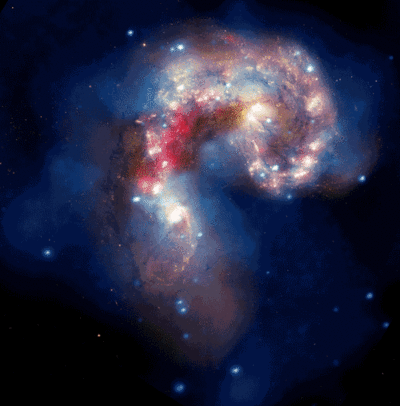
One time, a frog actually photobombed the launch of our LADEE spacecraft…someone on the internet gave him a parachute…

Want to see what it’s like to play soccer in space? There’s a GIF for that…

There are also some beautiful GIFs looking through the Cupola window on the International Space Station…


This warped footage from the International Space Station gives us ride around the Earth…

While this one encourages us to explore the unknown...

When our New Horizons spacecraft flew by dwarf planet Pluto in 2015, the internet couldn’t get enough of the Pluto GIFs...
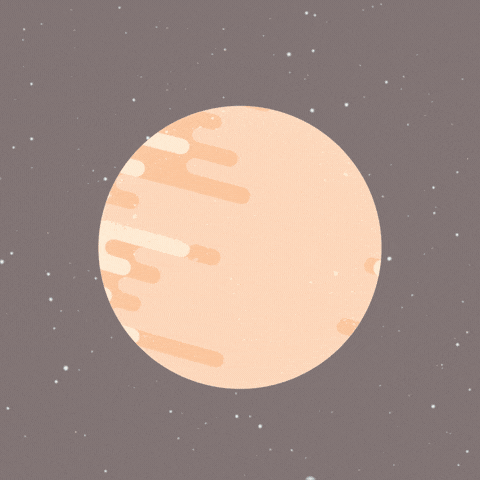

NASA GIFs

Want to dive into a black hole of other fun space GIFs? Check out our GIPHY page HERE.
Want to use our GIFs?! You can! Our GIFs are accessible directly from the Twitter app. Just tap or click the GIF button in the Twitter tool bar, search for NASAGIF, and all NASA GIFs will appear for sharing and tweeting. Enjoy!
GIF Sources
Cat Eye GIF: https://giphy.com/gifs/astronomy-cZpDWjSlKjWPm Cat GIF: https://giphy.com/gifs/cat-HopYL0SamcCli Frog GIF: https://giphy.com/gifs/nasa-photo-rocket-NOsCSDT2rUgfK Soccer GIF: https://giphy.com/gifs/yahoo-astronauts-zerogravity-QF1ZomA11zofC Cupola 1 GIF: https://giphy.com/gifs/nasa-Mcoxp6TgvQm6A Cupola 2 GIF: https://giphy.com/gifs/timelapse-space-11f3o8D2rQWzCM Earth GIF: http://giphy.com/gifs/earth-milky-way-international-space-station-ONC6WgECm5KEw Explore GIF: https://giphy.com/gifs/text-timelapse-lapse-Vj7gwAvhgsDYs Pluto 1 GIF: https://giphy.com/gifs/l46CzjUnYFfeMXiNO Pluto 2 GIF: https://giphy.com/gifs/pluto-dbV1LkFWWob84
Make sure to follow us on Tumblr for your regular dose of space: http://nasa.tumblr.com
What is the most exciting thing you hope to learn?
First All-Woman Spacewalk
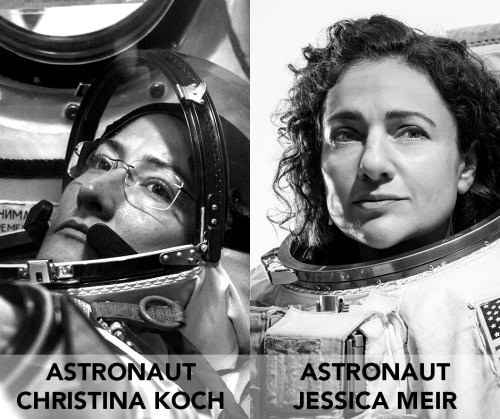
NASA astronauts and best friends, Christina Koch and Jessica Meir, made history Friday, October 18, 2019, by conducting the first all-woman spacewalk outside the International Space Station (ISS)! The Expedition 61 flight engineers ventured into the vacuum of space at 7:38 a.m. EDT to swap out a failed power controller that regulates the batteries used to collect and distribute power to the orbital laboratory – a task that took a total of seven hours and 17 minutes to complete.
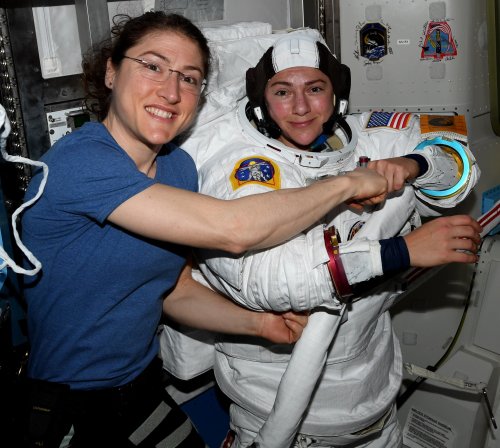
This was Koch’s fourth spacewalk and Meir’s first. Both women, selected as astronaut candidates in 2013, are on their first trip to work and live aboard the space station. Meir will be the 15th woman to spacewalk, and the 14th U.S. woman.
Get to know the astronauts
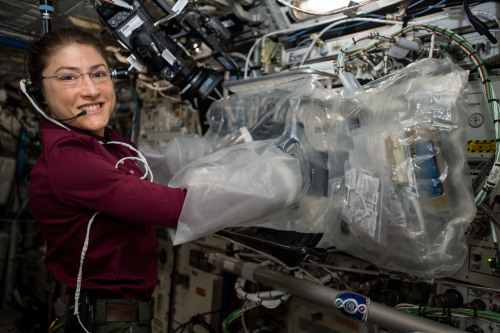
In addition to being an astronaut, Christina Koch is an engineer and physicist. Her career has taken her to extreme parts of the planet to conduct scientific field missions in places like the Antarctic South Pole and Greenland’s Summit Station. Prior to being selected as an astronaut candidate in 2013, she worked as an Electrical Engineer at our Goddard Space Flight Center’s Laboratory for High Energy Astrophysics.
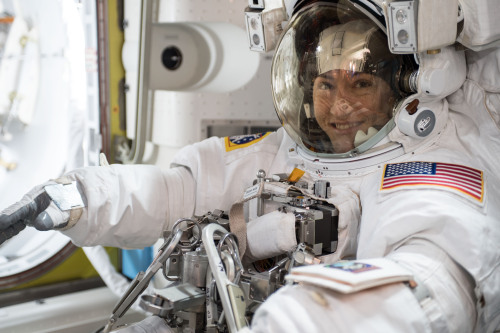
Koch left Earth on March 14, 2019, and is slated to set a record for the longest single spaceflight by a woman with an expected total of 328 days in space. Her extended mission will provide researchers the opportunity to observe the effects of long-duration spaceflight on a female body in preparation for human missions to the Moon and Mars.
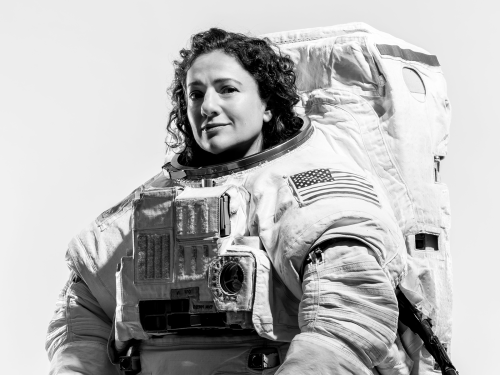
Jessica Meir dreamed of the day she would make it to space since the age of five. That dream became a reality on Wednesday, Sept. 25, 2019 as she left Earth on her first spaceflight – later floating into her new home aboard the International Space Station.
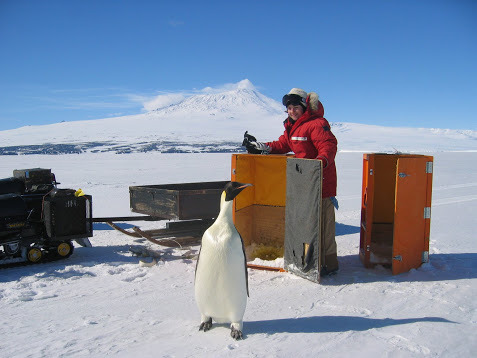
While Meir’s new home is more than 200 miles over the Earth, she is no stranger to extreme environments. She studied penguins in Antarctica and mapped caves in Italy – both of which prepared her for the ultimate extreme environment: space.
#AllWomanSpacewalk, what’s the deal?
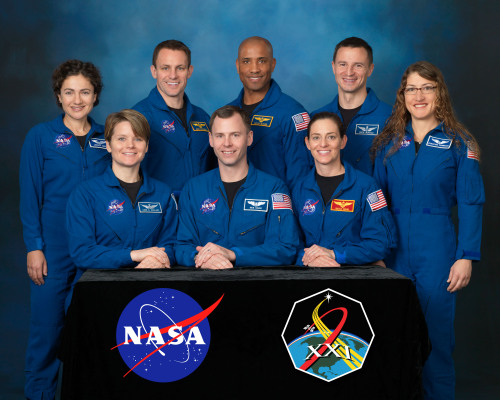
The all-woman spacewalk wasn’t something we purposefully planned; it is a testament to the increasing number of female astronauts in the space program. For example, Koch’s and Meir’s 2013 class of astronaut candidates was 50 percent women!
When asked in an interview about the importance of conducting her mission and this spacewalk, Koch said,
“In the end, I do think it’s important, and I think it’s important because of the historical nature of what we’re doing. In the past women haven’t always been at the table. It’s wonderful to be contributing to the space program at a time when all contributions are being accepted, when everyone has a role. That can lead in turn to increased chance for success. There are a lot of people who derive motivation from inspiring stories of people who look like them, and I think it’s an important story to tell.”
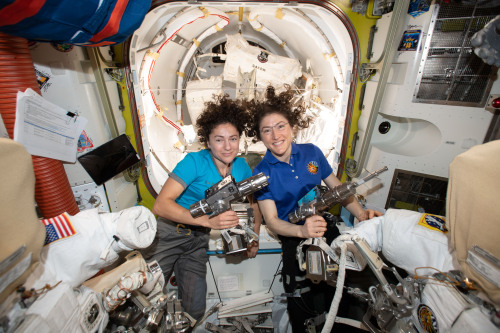
It’s important to note that spacewalks are not easy; astronauts typically describe them as the most physically challenging thing they do. Assignments are made on the basis of which astronauts are the best prepared to accomplish the tasks at hand under the conditions at the time. Today, Koch and Meir were the top astronauts for the job.
Women are no stranger to spacewalks!

While this was the first spacewalk to be conducted entirely by women, women are no strangers to spacewalks. Exactly 35 years and one week ago, Kathryn Sullivan (pictured above) made her own historic debut as the first U.S. woman to conduct a spacewalk. Since then, a total of 14 women (15 including Jessica) have ventured into the vacuum of space on 40 different spacewalks. Former Astronaut Peggy Whitson performed a record number of 10! From Astronauts to mission directors, women have been making their mark at the agency for decades now. A few of our recent pioneers are:
Astronaut Kate Rubins: First person to sequence DNA in space
Astronaut Peggy Whitson: First woman to command the ISS
Sandra Cauffman: Director of our Earth Science’s Division
Nicola Fox: Director of our Heliophysics Division
Lori Glaze: Director of our Planetary Science Division
Coming soon: The first woman to walk on the Moon
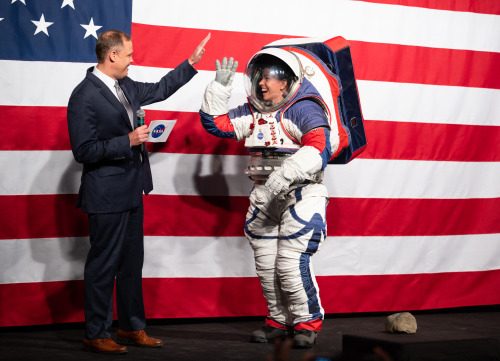
The first all-woman spacewalk is a milestone worth noting and celebrating as we look forward to putting the first woman and the next man on the Moon by 2024 with our Artemis lunar exploration program. With today’s historic event, we once again set a precedence for women to lead in space exploration.
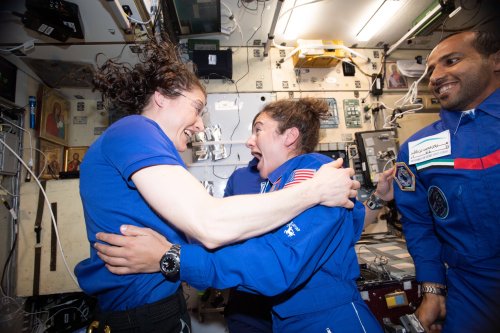
We hope achievements such as this provide inspiration to you all around the world, proving that hard work can lead you to great heights. This is not just a historic day for NASA, but a moment we can all feel proud of.
Didn’t have time to tune in? Check out the replay, here. Koch was wearing the spacesuit with red stripes, while Meir’s had no stripes.
If you’d like to keep up with Christian Koch and Jessica Meir’s work 254 miles above planet Earth, follow them on Twitter at @Astro_ Christina and @Astro_Jessica.
Be sure to follow us on Tumblr for your regular dose of space: http://nasa.tumblr.com
National Aviation Day!

Today, August 19, is National Aviation Day! You might wonder why we’re celebrating National Aviation Day, let us tell you…
First, did you know that EVERY U.S. commercial aircraft and every U.S. air traffic control tower has NASA-developed technology on board? It’s true! Here at NASA, we're invested in aeronautic research. Today’s air transportation system is an integral part of the U.S. and global economies.
It’s the primary mechanism for connecting countries across the world through moving people, as well as goods and services. You feel the impacts of aviation and the air transportation system everyday. Just about every product produced and purchased today has been touched by aviation in some way. Aircraft transport 17.7 billion tons of freight every year. While you may not have flown today, something you needed did.

Our aviation experts are dedicated to improving the design of airplanes so they’re more Earth friendly – less fuel use, lower pollution, less noise around airports. We also work with the Federal Aviation Administration to provide new tools to air traffic controllers for improving efficiency and reducing delays.
So, celebrate National Aviation Day with us! Spread Your Wings, take a photo, post it today and tag #SpreadYourWings and/or #NationalAviationDay. We may even pick your photo to highlight on our NASA web page!

It was a dark and stormy flyby...
Our @NASAJuno spacecraft's JunoCam captured images of the chaotic, stormy northern hemisphere of Jupiter during its 24th close pass of the giant planet on Dec. 26, 2019. Using data from the flyby, citizen scientist Kevin M. Gill created this color-enhanced image. At the time, the spacecraft was about 14,600 miles (23,500 kilometers) from the tops of Jupiter’s clouds, at a latitude of about 69 degrees north.
Image Credit: Image data: NASA/JPL-Caltech/SwRI/MSSS
Image processing by Kevin M. Gill, © CC BY
Make sure to follow us on Tumblr for your regular dose of space: http://nasa.tumblr.com
-
 jofarmer16-blog liked this · 6 years ago
jofarmer16-blog liked this · 6 years ago -
 snowshy liked this · 8 years ago
snowshy liked this · 8 years ago -
 alfssstuff liked this · 8 years ago
alfssstuff liked this · 8 years ago -
 mule1971 liked this · 8 years ago
mule1971 liked this · 8 years ago -
 set-saiil liked this · 8 years ago
set-saiil liked this · 8 years ago -
 aint-a-monet reblogged this · 8 years ago
aint-a-monet reblogged this · 8 years ago -
 enniskillen2016-blog liked this · 8 years ago
enniskillen2016-blog liked this · 8 years ago -
 badlemonx reblogged this · 8 years ago
badlemonx reblogged this · 8 years ago -
 icyboo-com-blog reblogged this · 8 years ago
icyboo-com-blog reblogged this · 8 years ago -
 bloggingfashionably liked this · 8 years ago
bloggingfashionably liked this · 8 years ago -
 importantkryptonitemagazine liked this · 8 years ago
importantkryptonitemagazine liked this · 8 years ago -
 carlosemiliopir liked this · 8 years ago
carlosemiliopir liked this · 8 years ago -
 manuelrealdiaz-blog liked this · 8 years ago
manuelrealdiaz-blog liked this · 8 years ago -
 pricklybearcactus liked this · 8 years ago
pricklybearcactus liked this · 8 years ago -
 romcomslutdotcom liked this · 8 years ago
romcomslutdotcom liked this · 8 years ago -
 sovietbathtubfactory reblogged this · 8 years ago
sovietbathtubfactory reblogged this · 8 years ago -
 wolfdaze reblogged this · 8 years ago
wolfdaze reblogged this · 8 years ago -
 oniwoolf-blog liked this · 8 years ago
oniwoolf-blog liked this · 8 years ago -
 masonbrrabbin-blog liked this · 8 years ago
masonbrrabbin-blog liked this · 8 years ago -
 holiday-at-sea liked this · 8 years ago
holiday-at-sea liked this · 8 years ago -
 pcdmesamidala reblogged this · 8 years ago
pcdmesamidala reblogged this · 8 years ago -
 baldansmarue liked this · 8 years ago
baldansmarue liked this · 8 years ago -
 biggdaddysexymomma liked this · 8 years ago
biggdaddysexymomma liked this · 8 years ago -
 berru-imou liked this · 8 years ago
berru-imou liked this · 8 years ago -
 reemarkable0 reblogged this · 8 years ago
reemarkable0 reblogged this · 8 years ago -
 reemarkable0 liked this · 8 years ago
reemarkable0 liked this · 8 years ago -
 tumblebori liked this · 8 years ago
tumblebori liked this · 8 years ago -
 cheelmo liked this · 8 years ago
cheelmo liked this · 8 years ago -
 universomecanico reblogged this · 8 years ago
universomecanico reblogged this · 8 years ago -
 vivienschildwachter reblogged this · 8 years ago
vivienschildwachter reblogged this · 8 years ago -
 abbagiuliana liked this · 8 years ago
abbagiuliana liked this · 8 years ago -
 puhchopolinov liked this · 8 years ago
puhchopolinov liked this · 8 years ago -
 sequenceshepard liked this · 8 years ago
sequenceshepard liked this · 8 years ago -
 souravvaskar liked this · 8 years ago
souravvaskar liked this · 8 years ago -
 souravvaskar reblogged this · 8 years ago
souravvaskar reblogged this · 8 years ago
Explore the universe and discover our home planet with the official NASA Tumblr account
1K posts